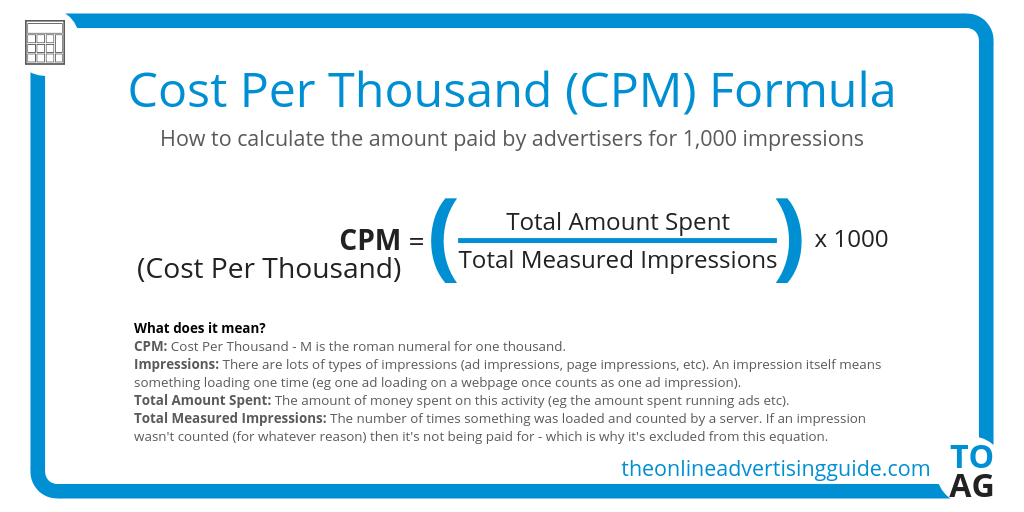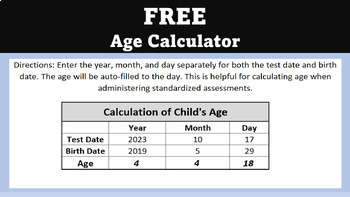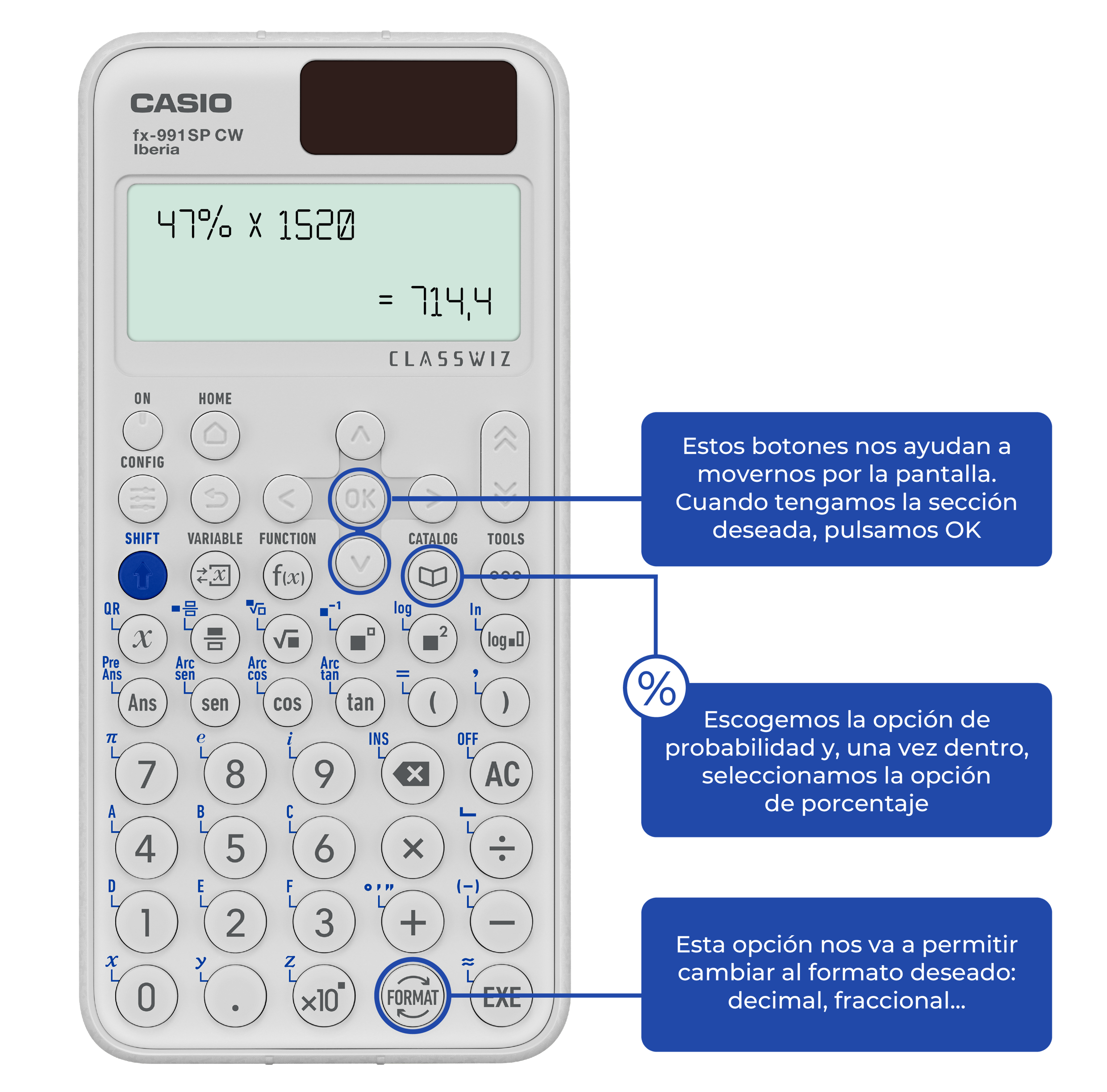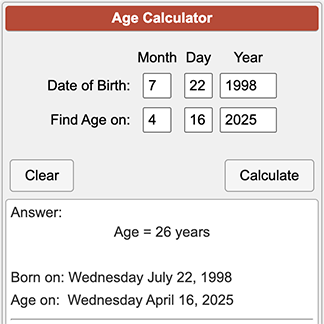What Is CPM in Advertising?
CPM stands for Cost Per Thousand Impressions, a term that denotes the price of 1,000 advertisement impressions on one webpage. If an advertiser agrees to pay $2.00 CPM, that means they will pay $2.00 for every 1,000 impressions of their ad. The “M” in CPM represents the Roman numeral for 1,000.
CPM is one of the most common metrics for pricing digital ads and is crucial for determining the relative cost-efficiency of various advertising opportunities.
Understanding CPM helps advertisers make informed decisions about where to place their ads. By comparing CPM rates across different channels, advertisers can allocate their budgets effectively, aiming for the highest possible exposure at the lowest possible cost.
How to Calculate CPM?
To calculate CPM, you need to know the total amount spent on an advertising campaign and the number of impressions that the ad received. The formula for calculating CPM is:
CPM = (Total Ad Spend / Number of Impressions) x 1000
For example, if you spend $200 on a campaign and receive 50,000 impressions, your CPM would be $4.00. This means you’re paying $4.00 for every 1,000 impressions.

Calculating CPM is a straightforward process, but it requires accurate data to make informed marketing decisions.
Why Is CPM an Important Metric?
CPM is an important metric because it measures the cost efficiency of an advertisement or media channel. High CPM rates could indicate a highly targeted audience or a premium advertising slot, while lower CPM rates could signal broader reach with less targeting.
CPM also allows advertisers to compare the cost of advertising across different channels and platforms, enabling them to optimize their ad spend for maximum impact.
Furthermore, CPM is useful for projecting advertising costs and setting campaign budgets. It helps advertisers understand how their advertising dollars are being allocated and what kind of exposure they can expect.
What Is the Average CPM for Each Ad Type?
The average CPM can vary greatly depending on the type of ad and the platform on which it is displayed. For instance, display ads typically have lower CPM rates than video ads. Additionally, niche audiences or specialized content can command higher CPMs due to their targeted nature.
- Banner Ads: $0.50 – $4.00 CPM
- Video Ads: $3.00 – $30.00 CPM
- Native Ads: $1.00 – $10.00 CPM
- Social Media: $2.50 – $8.00 CPM
These numbers are averages and can fluctuate based on factors like ad placement, quality of audience, and industry competition.

What’s The Difference Between CPM, CPC, And CPA?
CPM (Cost Per Mille), CPC (Cost Per Click), and CPA (Cost Per Acquisition) are all pricing models used in online advertising, but they measure different aspects of an ad campaign’s effectiveness and cost.
- CPM measures the cost of getting an ad seen (impressions).
- CPC measures the cost of getting a user to interact or click on an ad.
- CPA measures the cost of getting an action from the user, such as a sale or sign-up.
Choosing the right pricing model depends on the goals of the advertising campaign and what action is most valuable to the advertiser.
Why Calculate CPM with an Online CPM Calculator?
Using an online CPM calculator simplifies the process of determining the cost-effectiveness of an advertising campaign. It saves time and reduces the risk of human error in calculations.
By inputting a few key figures, advertisers can quickly understand their CPM and make necessary adjustments to their ad strategies.
Online CPM calculators are particularly valuable for small businesses and those new to digital advertising, who may not have the resources for complex analytics tools.
 Baseball logo – DesignStudio
Baseball logo – DesignStudioWhat Is the Average CPM on Each Social Platform?
Social media platforms have varying audiences, engagement levels, and therefore, CPM rates. Here’s a simplified breakdown of CPM averages:

- Facebook: $7.19 CPM
- Instagram: $7.91 CPM
- LinkedIn: $6.59 CPM
- Twitter: $6.46 CPM
These rates can change based on the industry, target audience, and the specific nature of the ad content. It’s important for advertisers to stay updated on these rates to ensure efficient budgeting for social media campaigns.
Frequently Asked Questions About CPM Calculations
How Do You Calculate Cost from CPM?
To calculate the cost from CPM, you can rework the standard CPM formula:
Total Cost = (CPM / 1000) x Number of Impressions
This formula allows you to predict the total cost of your ad spend based on your desired number of impressions and the CPM rate you’re aiming for.
It’s a crucial part of planning and budgeting for advertising campaigns, ensuring that you don’t overspend on your marketing efforts.

How to Calculate the Total Cost of an Ad?
To calculate the total cost of an ad, consider both the production costs and the cost to distribute the ad. Add the cost of designing and creating the ad to the cost of running the ad, which can be calculated using the CPM formula.
Remember to factor in any additional costs like agency fees or special placement premiums to get a comprehensive understanding of your total ad spend.
How Do You Calculate CPM Online?
Calculating CPM online can be done using the same formula:
Total Ad Spend / (Total Impressions / 1000) = CPM
Many online platforms provide the necessary analytics, such as total impressions and ad spend, which make it straightforward to calculate your CPM.
Additionally, there are numerous free online CPM calculators that can help you determine your ad campaign’s CPM with ease.

What Is the CPM Formula for Ads?
The CPM formula for ads is:
CPM = (Total Ad Spend / Number of Impressions) x 1000
This formula is the cornerstone of calculating the cost efficiency of an advertising campaign, particularly in the realm of digital marketing.
 Baixar video Pinterest – Salvar video do Pinterest 4K
Baixar video Pinterest – Salvar video do Pinterest 4KUnderstanding this formula and applying it correctly is essential for advertisers who want to control their advertising costs and evaluate the performance of their ad placements.











